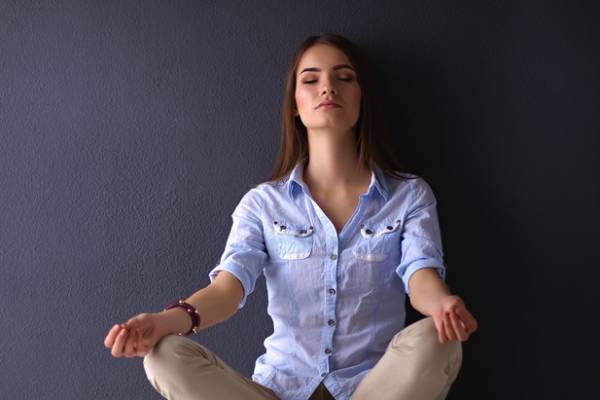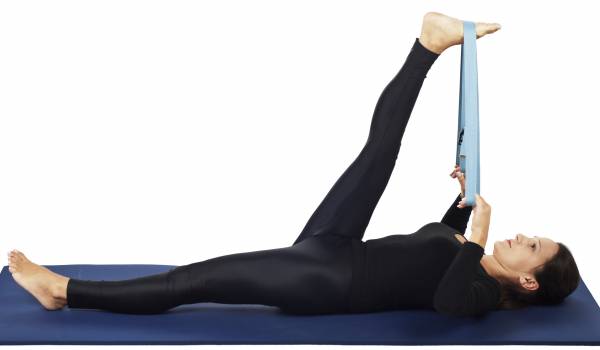If you’ve suffered with intermittent or chronic back pain, you know how hard it is to focus on anything else until relief is found. You’re not alone. Statistics show eighty million Americans will experience back problems at some point in their life.
Over fifty billion dollars a year is spent treating back problems in the United States alone. From painkillers and surgery to the chiropractor, the acupuncturist, and much more – we want freedom from suffering, and rightfully so.
Balance Is Health
Back problems stem from a variety of causes. Some of the most common include anxiety and stress, poor posture, inactivity, or structural (anatomical) issues. Experts agree that a healthy back is a balanced back – one where the three major areas of the spine (cervical, thoracic, and lumbar) are properly aligned and there are equal parts flexibility and strength.
“Experts agree that a healthy back is a balanced back – one where the three major areas of the spine (cervical, thoracic, and lumbar) are properly aligned and there are equal parts flexibility and strength.”
As it turns out, yoga’s main concern is balance. In fact the word “yoga” means union or the balancing of opposites. This explains why more and more people, including medical professionals, are finding the ancient practice of yoga to be a powerful ally in treating and preventing back problems.
Let’s find out how yoga can help you. We’ll look at some simple practices you can begin today to support the health of your back.
Practice Controlled Breathing
Hands down breathing is yoga’s silver bullet. The practice of yoga requires the breath, the body, and the mind to do the same thing at the same time in a conscious way. This integration affects us mentally and physically. Slowing down the breath and breathing more deeply relaxes mental and physical tension. This is helpful for anyone dealing with anxiety or stress-related back problems.
Here’s one of the simplest breathing techniques. It’s called sama vritti. It means “equal breathing.” I recommend you do this seated with some support behind your back. You can sit in a chair or on the floor with your back against a wall. Just make it easy to keep your spine upright so you can focus primarily on your breath.
- Once you’re situated, close your eyes. Let your lips be closed but not tight.
- Drop the tongue down to the bottom of your mouth so it’s not tense.
- Take a smooth three-count inhale through your nose.
- Now exhale three counts out through the nose. Try to keep your lips closed. This may take some practice, since most of us are more familiar with exhaling through the mouth.

Now you see why it’s called even breathing – because the length of the inhale matches the length of the exhale. If three counts felt easy for you, then try four, five, six, or higher. Just be sure the inhale and exhale match in length and that it’s not a strain at all. Once you find the rhythm that works for you, repeat the cycle about five or six times. When you finish, take a moment to notice how you feel.
“The practice of yoga requires the breath, the body, and the mind to do the same thing at the same time in a conscious way. This integration affects us mentally and physically.”
You can do this any time you feel tension or pain building in your back or in your mind. This kind of balanced breath has an immediate calming effect on the nervous system.
Practice Spinal Flexion and Extension
Another awesome thing about yoga is that it deals with both the flexion and extension of the spine. It expands our spine’s ability to curve forward, as well as backward. This type of movement lubricates the discs between the vertebrae giving them the nutrients they need.
Cat-cow pose (marjaryasana-bitilasana) is a simple way to begin experiencing these actions:
- Come down onto your hands and knees. Make sure there’s padding under your knees.
- Place your wrists under your shoulders and your knees under your hips.
- Spread your fingers a little and make sure your whole hand and the tops of your feet are pressing against the floor.
- As you inhale, tilt your chest and your tailbone up, like the shape of an upside down rainbow.
- As you exhale, curl the crown of your head and your tailbone down toward the floor. You’ll be looking under your belly towards your legs.
If doing this feels good and there’s no sharp pain anywhere, then continue for five to ten rounds. Keep the movement and the breath connected. Pause for a few moments after you finish and notice how you feel.
Work the Hamstrings and Piriformis
Two other areas directly related to a healthy back are the hamstrings and piriformis. Most of us have some idea about our hamstrings, but what’s the piriformis? It’s a hip rotator located deep in the gluteals (buttocks) and the sciatic nerve sits right in front of it. When these areas are tight from sitting, fatigue, or repetitive motions like running or other sports, it can contribute to back pain.
Thankfully there’s a yoga pose that targets these areas beautifully – reclining big-toe pose (supta padangusthasana). Have a towel or some other kind of strap handy.
- Lie down on your back.
- Bend your left knee and place your left foot down on the floor.
- Bring your right knee into your chest.
- Take a towel or strap and place it around the ball of the right foot.
- Hold each end of the towel with your hands so the towel is cradling the ball of your foot.
- Begin to extend your leg up toward the ceiling as you flex your foot.
- Stop at a place where you’re not forcing your leg to straighten.
- Be sure your shoulders and head are relaxed and remain down on the floor.
- If this feels good, then you can try sliding your left leg out straight on the floor.
- Now, take three to five of those equal breaths described earlier.
When you’re done, bend the right knee, remove the towel, and repeat on the left side. After completing both sides, lie with the legs extended straight on the floor for a few moments and notice how you feel.

Ask for Help
Remember that nothing can substitute the trained eye of an experienced yoga teacher. I suggest connecting with a teacher as soon as possible. There are a lot of books and online references that list yoga poses to deal with back ailments. But if you do these without supervision, chances are you will reinforce bad habits that contributed to your back problems in the first place.
“If you’ve been inactive or have limited mobility, start with a gentle or restorative practice. If you are physically active, start with a level 1 or 2 hatha or vinyasa flow class.”
Be sure to choose the right class. If you’ve been inactive or have limited mobility, start with a gentle or restorative practice. If you are physically active, start with a level 1 or 2 hatha or vinyasa flow class.
Finally, the following books are must-reads:
- Yoga Anatomy, by Leslie Kaminoff
- Pain Free, by Pete Egoscue (with Roger Gittines)
- The Psychology of the Body, by Elliot Greene and Barbara Goodrich-Dunn
This verse from the Yoga Sutras gives a glimpse of what the practice of yoga can offer to anyone – especially those struggling with back pain: “The natural comfort and joy of our being is expressed when the body becomes steady (asana).” (sutra 2.46)
The quiet mind and balanced body achieved through the practice of yoga are invaluable for anyone who wants to give his or her back the best care.
You’ll Also Enjoy:
- Heal Your Lower Back Pain With These 5 Yoga Poses
- 6 Steps to Heal Your Low Back Injury
- How to Avoid Injury in Yoga: Every Body Is Different
- What’s New On Breaking Muscle Today
References:
1. Karen P. Barr, MD, “Yoga for Back Problems,” last modified December 12, 2003.
2. Fred Busch, “How Yoga Helps the Back,” last modified January 27, 2004.
3. “How Anxiety Causes Back Pain: And How to Stop It,” Last Modified 2015.
4. “Back Pain Facts and Statistics,” last modified 2015.
5. “Having a Healthy Back,” last modified 1990.
6. Nischala Joy Devi, The Secret Power of Yoga. New York: Three Rivers Press, 2007.
Photos 1, 2, and 4 courtesy of Shutterstock.






